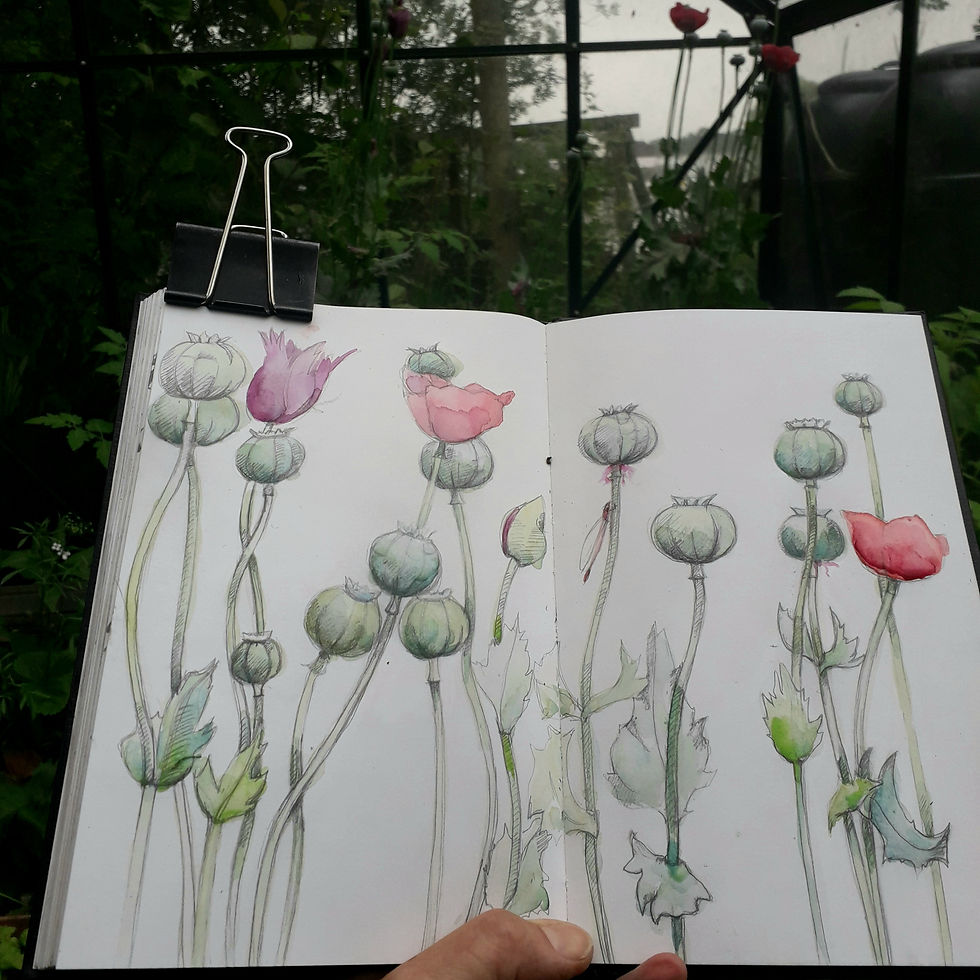Tulip Fever
- Painter and Printmaker
- Jun 12, 2019
- 2 min read
Updated: May 24, 2022

This Spring I became smitten with tulips.
They arrive in April bursting boldly above the flowerbeds, unhindered by the foliage of other plants and they provide such a shock of colour after the retiring snowdrop and narcissi. Reticent, they are not.
I love the ritual of burying the shiny chestnut bulbs in autumn, hoping that the mice don’t snaffle them over the winter, and knowing that the following spring they will burst onto the scene, strutting their stuff. Each year the bulbs dwindle, but this gives me the excuse to plant afresh. I already have a wish list for next year.
While I was painting them, I sought out how others had captured them and this sent me down a rabbit hole of discovering the wonderful 17th century Dutch artists who so revered them. I went to see the Broughton collection at the Fitzwilliam Museum in Cambridge and, although only a few were on display at the time, I marvelled at their jewel-like richness and how the blooms were captured at their moment of perfection.
Anyone who has put tulip in a vase knows how quickly they change form, their swan-like necks drooping with the heavy heads, changing form and colour daily, their petals contorting and becoming even more beautiful in decay.
This constant shift is what presents the challenge in painting them, but it is also what makes them so beguiling. In painting flowers, you want to capture their fragility and transience, and convey something of how they make your heart sing, but it is their fleeting nature that makes them so difficult. Using watercolour, they can be painted within hours, but oils are more difficult, as unless you paint them quickly with thick, loaded strokes in one sitting, they take several days to paint and dry between glazes. When trying this before, from cut specimens, I found their shape-shifting infuriating. A pose would be started one day to discover the next morning that the flower had changed entirely.

This year I managed to partly solve this by planting them in pots and having them on a table next to me. Working in a chilly studio, for once, was helpful and overnight they were probably too cold to move.
While painting the Rococo tulips I took photos at the end of each painting session. I paint thinly and build up the colour in glazes, using Zest It at the beginning to dilute the paint, an orange scented, biodegradable solvent that is much better than turps in a confined space, and then I use Liquin as a medium, which also helps the painting dry a little more quickly. I moved from bud to flower and wanted to show the flower in its young, apple green early stage to its full blown crimson curliness.

They are fascinating to paint and you have to keep looking, and then looking again, at the striations of the strong colours and how they unfurl. Hours can slip by, and you find that you have barely painted one tulip, as you have been so absorbed in their form.

But I loved painting them and look forward to another bout of Tulip fever next year.
My Rococo Tulips are for for sale here.




Comments